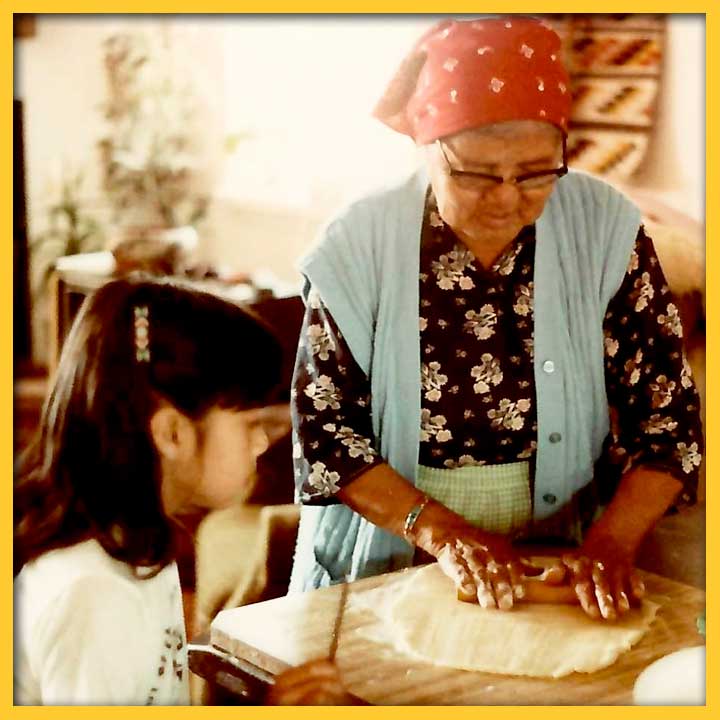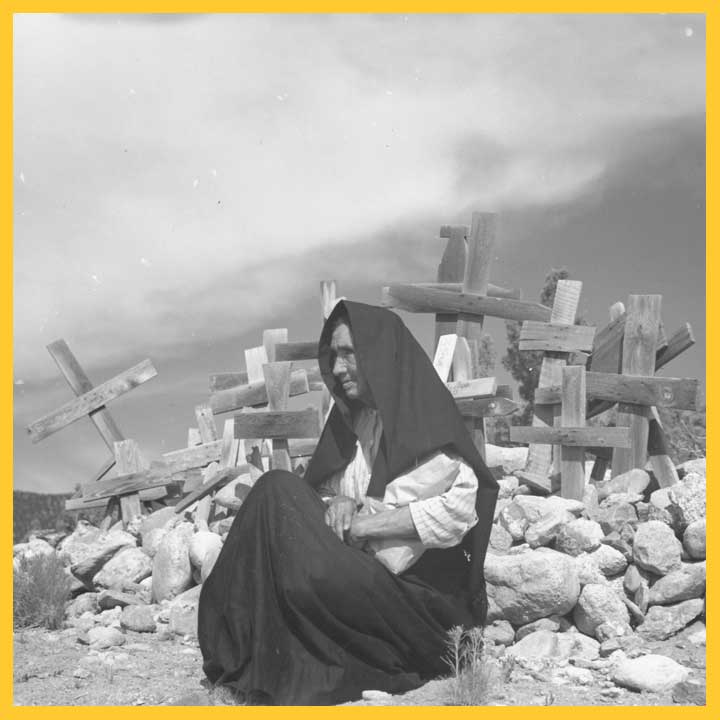THE BANDANA BRIGADE: WITH HEARTS AND HANDS, WOMEN DO IT TOGETHER

By Kim Suina Melwani
“Like a ‘bandana brigade’ these women seemed ready to face whatever obstacles that came their way.”
IT’S THE MOST WONDERFUL TIME OF THE YEAR: THE BURNING OF ZOZOBRA AND HERALDING THE NEW SEASON

By Nicolasa Chávez
“Now celebrating his 99th year, Zozobra is older than the Macy’s Thanksgiving Parade and the lighting of the Rockefeller Center Tree.”
ANCIENT DEATH RITUALS RUN DEEP IN NEW MEXICO

By Ana Pacheco
“Through the mid-20th century some women wore the tápalo in the villages of northern New Mexico. That tradition is long gone, but the one that remains is the descanso, the roadside memorial.”
ESTHER MARTINEZ (P’OE TSÁWÄ/BLUE WATER): A MATRIARCH OF PUEBLO LANGUAGE PRESERVATION

By Kim Suina Melwani
“By age seven, Martinez no longer had her elders, their stories, or her grandmother’s cooking to ease the transition as she reoriented herself to boarding school life about twenty miles south of her village of Ohkay Owingeh.”
SLOW BURN: A FAMILY HISTORY OF GREEN CHILE STEW

By Vanessa Baca
“Ubiquitous in our state, chile is a staple in our recipes year-round, but in the winter, it truly stakes its claim.”
LITTLE BROWN BAGS: A BRIEF MEDITATION ON A NUEVO MEXICO TRADITION

By Leeanna Teresa Martinez y Torres
“Throughout much of New Mexico, luminarias are visually recognized as the symbol of the Christmas season.”
FISH NOT FLESH: SYMBOLISM OF THE NEW MEXICO LENTEN FEAST

By Vanessa Baca
“Ultimately, it is the return to life after the darkness of death that is at the heart of Lent and Easter Sunday, and it is this contrast that is represented in the food eaten by New Mexico Catholics.”
A SWEET AND SPICY MEMORY: BISCOCHITOS IN NEW MEXICO CULTURE

By Vanessa Baca
“Biscochitos have a far deeper significance than being just sweet treats. They represent family roots. It is the rare Hispanic New Mexico family that does not have its own recipe for biscochitos.”
CELEBRATING THE DEAD: DÍA DE LOS MUERTOS AND ALL HALLOWE’EN

By Nicolasa Chávez
“Many people do not know the origins of this fun – and fright-filled night, nor of the similarities its origins share with Día de los Muertos.”
